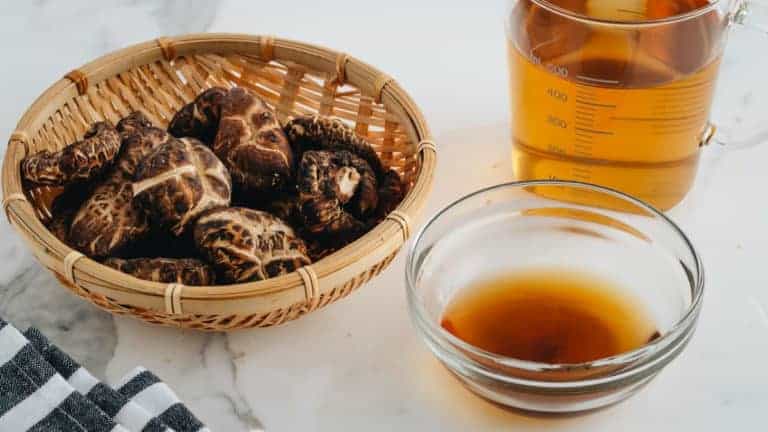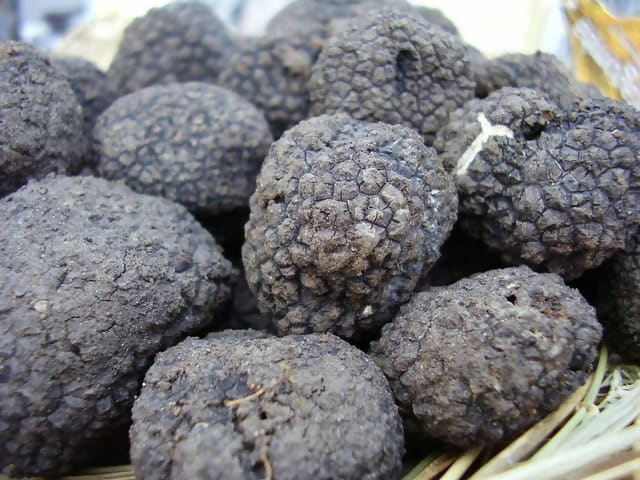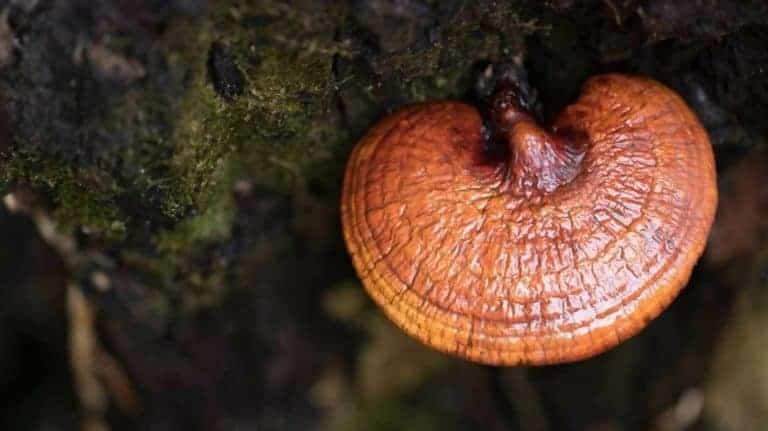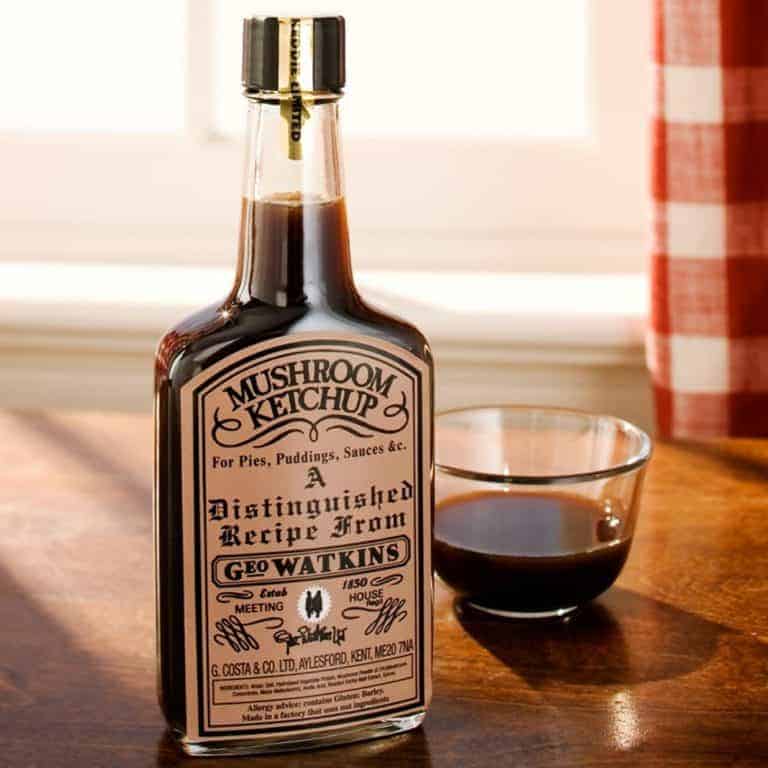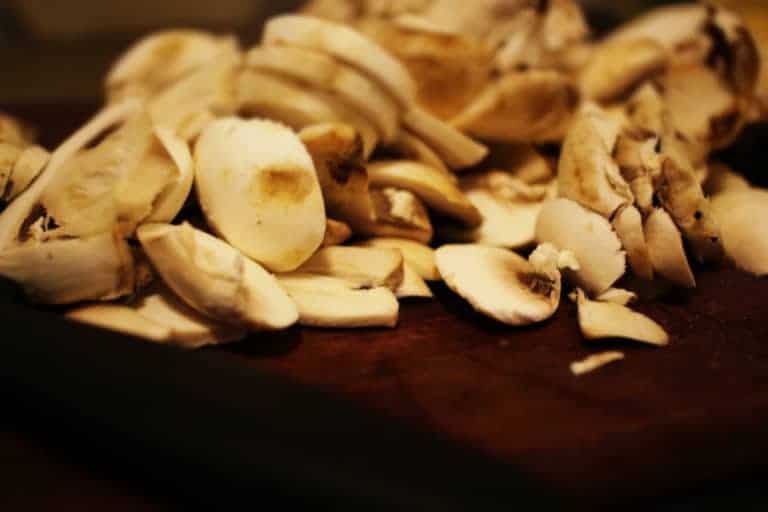The Ultimate Guide to Microdosing Mushrooms

In recent times, microdosing has become one of the hottest trends in self-development with many associated benefits such as increased productivity, emotional balance, energy, and reductions in anxiety and depression. So then, what is microdosing?
Microdosing refers to taking a small, sub-perceptual dose of a psychedelic which has beneficial effects on cognition and mood without a significant alteration in consciousness.
In this article, we will be focusing on microdosing psilocybin, the psychoactive component in magic mushrooms of the Psilocybe and other genera. Low doses of psilocybin have been used medically as early as the 16th century in Aztec culture, where the mushroom was referred to as teonanacatl, or the “sacred mushroom”. The use of psilocybin certainly predates this, going back thousands of years to indigenous shamans and healers who have certainly experimented across every possible dose level.
In popular culture today, microdosing has become very popular in the tech community (especially Silicon Valley, where Steve Jobs spoke highly of its beneficial effects) and those interested in nootropics, biohacking, and the therapeutic effects without the use of pharmacological drugs that pose negative side effects and dependence potential.
Scientific progress has been stunted over recent decades over the political concern about its recreational use. However, in the growing environment of psychedelic destigmatization and psychedelic clinical trials, recent research findings are increasingly supporting its beneficial effects on cognition and overall well being.
We will explore how psilocybin affects the brain, its purported health benefits and cautions supported by recent research, how to do it effectively, and where to learn more.
What Makes Magic Mushrooms Magical?
Of the thousands of edible fungi, about 180 species are known to contain psilocybin and psilocin, the psychoactive compound found in magic mushrooms. Psilocybin is converted into the active metabolite psilocin once it enters the body.
These compounds are found in mushrooms from the genera Psilocybe and Copelandia, the latter of which contains approximately twelve psychoactive species, with more psilocin than psilocybin content compared to Psilocybes.
The neuroscience of magic mushrooms
Psilocybin is structurally similar to and effectively mimics the neurotransmitter serotonin in the brain, binding to several different subtypes of serotonin (5-HT) receptors, especially 5-HT2A receptors.
Several of these receptors are the main targets of antidepressant medications like SSRIs, which could account for psilocybin’s anxiety-alleviating and mood-boosting effects. These receptors are widely distributed across many different brain regions that control stress, emotion, executive function, and perception of self. Their activation is primarily what makes the drug exhibit its unique effects psychologically, physiologically, and behaviorally.
The brain is more like a dynamic ecosystem than a static organ, constantly restructuring its structure and function in relation to the experience. Psilocybin has been found to play an important role in enhancing a protein involved in the formation of new neurons and synapses, brain-derived neurotrophic factor (BDNF).
Through its interaction with serotonin receptors, psilocybin is also implicated in long-term synaptic plasticity, making connections in the brain more “malleable” and rewiring brain circuitry to the ultimate benefit of your values and goals. Psilocybin use has been found in recent studies to alter blood flow in various regions of the brain and allow distant brain regions to communicate more easily, which could underscore its potential for “resetting” the mind and dissolving or loosening maladaptive mental models, rigid thinking, and dysfunctional behavioral patterns.
The Risks and Cautions of Microdosing Mushrooms
Legality of Psilocybin
Microdosing psychedelics is a controversial practice from a legal perspective, but recent destigmatization and research efforts have led to its recent decriminalization in some parts of the U.S. and possible legalization in the near future.
As of now, psilocybin is considered a Schedule I controlled substance in the United States, which places them in a class with drugs that are deemed harmful and of no medicinal value. They are also illegal in many other countries in the world. Those who use psilocybin for therapeutic or cognitive-enhancing effects expose themselves to the risks of using an illegal substance.
Safety of Microdosing Psilocybin
Psilocybin has been used throughout human history
Psilocybin has been used for centuries across many different cultures and is known to be very low risk in terms of harmful physical effects and addictiveness. However, there are still some risks to keep in mind that are associated with microdosing psilocybin or other psychedelics.
Overdosing into “minidose” territory is common and it can be hard to know what dose you’re taking
Unlike standardized pharmaceuticals, It is difficult to know precisely the dosage you are taking. This is primarily from the various routes of ingestion and the natural variation in psilocybin among psilocybin-containing mushrooms. This is also true when microdosing LSD, which is potent and therapeutic in the micrograms range.
The variation in potency within and between mushroom species and between sources as well as the lack of precision in dosing can lead to unexpected high doses that are not very conducive to everyday activities like work or school. When not expected or adequately prepared for, these can potentially lead to bad trips that may have mental health consequences or may create a mental space that isn’t conducive to productivity or every day activities. However, a large majority of those that report bad trips also report having benefited from the difficult experience.
Psilocybin is unregulated and it may be difficult to find a trusted source
Also, since psilocybin is currently a controlled and unregulated substance, it can be difficult to know how trustworthy or safe a particular source is. Apart from psilocybin used in clinical studies, there are no regulations or guarantees of a pure product when sourced from the general psychedelic community. A large part of safely microdosing comes down to establishing a trusted, reputable source within the psychedelic community which may take time and considerable effort.
The physical and mental health safety of microdosing
Although microdosing doesn’t carry the same mental health risks that a full recreational dose would carry, those with a history of psychosis or predisposition to psychotic disorders should exercise extreme caution with any amount of a psychedelic.
A small percentage of vulnerable people that take psychedelics report psychotic episodes or persisting hallucinogenic perceptual effects, called hallucinogen persisting perceptual disorder (HPPD). Others report sleep disturbances from microdoses, especially when taken late in the day, but this is more common from LSD microdosing which is generally seen as more stimulating.
One comprehensive population study from 2011 found that there was no significant relationship between mental health outcomes and psychedelic use, even when used in macrodose quantities.
However, the safety of long-term microdose experimentation is very much terra incognita as far as research studies goes, and anyone who decides to do so can be assured they are (perhaps unintentionally) at the forefront of this research.
Benefits of Microdosing Psilocybin
Microdosing psilocybin is associated with a wide range of health benefits supported by recent, small studies and a large amount of anecdotal reports. This includes, but is not limited to:
- Enhanced creativity and imagination
- Increased empathy and connection with nature and others
- Increased productivity
- Boosted energy levels
- Enhanced vividness and visual beauty
- Increased focus and concentration
- Improved cognitive flexibility
- Increased open mindedness
- Increased sociability
- Improved problem-solving and “out-of-the-box” thinking
- Improvement in affective disorders such as anxiety and depression
- Improvement in posttraumatic stress disorder
- Improvement in rigid thinking associated with obsessive-compulsive disorder
- Alleviation of end of life anxiety
- More positive emotion and overall emotional balance
- Decreased pain
- Better sleeping and eating habits
- Improvement in tobacco and alcohol dependence
These benefits are commonly reported to extend to non-dosed days and even out to the long term, implying psilocybin has a way of opening and restructuring the personality, especially along the dimension of openness. It is still to be discovered in well-designed studies whether or not these effects fully take form after cumulative doses or after just a single dose.
Once taken, the main subtle but noticeable effects come on within 20 to 60 minutes and lasts about six hours, and then trails off towards the end of the day. Many microdosers talk about an “afterglow” that extends into the next day or two. Some internet users even report an energy increase and anxiety reduction for as long as a week after a single microdose.
In the microdose range, you will not experience any hallucinations or transcendent experiences. At most, a microdose is more like an italicized version of everyday consciousness. Perhaps colors are a bit brighter and more vivid, there is a noticeable mood uplift, and positive changes in thinking and outlook start to become apparent after about an hour.
Therefore, microdoses offer a way to experience many of the positive benefits of psychedelic use without the potential for a bad trip, provided the dosing is well controlled. If a bad trip is reported in microdosing, it is normally in combination with another substance such as marijuana, which generally intensifies the effects or throws in a helping of paranoia into the mix.
Since there is no significant intoxication like a macrodose, many people are able to integrate microdoses into their weekly routines to enhance work productivity, novel problem-solving, and even increase their performance in a workout or sport. As recent media reports suggest, this is especially common among members of the tech community, but it is now becoming a worldwide phenomenon in a large range of professions and situations.
Microdosing may help with behavioral and affective disorders
Although the clinical data is scarce in relation to microdoses, microdoses of psilocybin may help treat mental health and behavioral disorders such as anxiety, depression, addiction, attention deficit hyperactivity disorder (ADHD), posttraumatic stress disorder (PTSD), and obsessive-compulsive disorder (OCD). With the exception of some preliminary studies, the therapeutic potential for these disorders is mostly described in anecdotal reports or in studies using macrodoses. For instance, a significant reduction in substance dependence and end of life anxiety was found in individuals who took psilocybin, but the researchers found that the observed effect necessarily required a transcendent, numinous experience only found in full recreational doses.
It is hard to definitively rule out placebo being at least partly accountable for the beneficial effects of microdosing because of the expectation of benefits involved. Also, there may be a bias towards the positive benefits both in the media and in the experiences of psychedelically-inclined people online. Nonetheless, much of the anecdotal data on the health benefits of microdosing note improved creativity, spiritual awareness, productivity, sociability, relationships, visual capabilities, mood, energy, cognition, concentration, and reductions in stress, addiction, depression, anxiety, and pain. Spiritually-oriented persons also find microdoses can help bring about a deeper, more contemplative meditation practice and a greater attunement to the beauties of nature and other people.
These sources include online forums and surveys from www.erowid.org, www.thethirdwave.co, www.dmt-nexus.me, and www.reddit.com/r/microdose. According to one anonymous microdoser from a 2011 interview study by Peter Johnstad recruited off one of these fora, “The best relief I ever had was in the 0.1g to 0.2g range of Psilocybe azurescens. This helped immensely with my manic bipolar depression and suicidal ideations.”
Microdosing may be an effective add-on treatment and antidepressant substitute
Psychedelic psychotherapy is an increasingly popular therapeutic practice in modern times and may boost the effectiveness of ordinary therapy because the mind is in a more malleable and open place that makes insights more likely to happen.
Since psychedelics encourage cognitive flexibility and novel subjective experience, pairing them with other behavioral treatments such as mindfulness-based therapies and cognitive behavioral therapy may prove to be more effective than these therapies alone. Some users even report tapering completely off their antidepressant medications after taking up a microdose regimen, which has none of the associated adverse side effects. Non-pharmacological factors also play a role in its therapeutic potential, including the mindset going into each dose and the setting in which it is being taken (popularly referred to as “set and setting”, although certainly more important for macrodoses).
Recent research suggests microdosing has promising benefits for mental well-being
A few animal and human studies have been conducted on microdosing with promising results for cognition, mood, and overall well being. It’s important to note the findings of the rodent studies have limited translational value for the human situation, while the findings of the available human studies are largely unrepresentative of the general population (that is, the sample is mostly psychedelically-inclined white upper-middle-class males).
In a recent 2018 study and perhaps the most well-known in the current psilocybin microdose literature, Prochazkova and colleagues investigated the benefits of microdoses (0.33g) of psilocybin truffles in 36 participants. They hypothesized that microdoses of psilocybin influence convergent thinking, (single-solution problem solving), divergent thinking (many possible solutions to a problem) and fluid intelligence (capacity to reason and solve new problems). The researchers found, using objective measures, that both convergent and divergent thinking were enhanced after a microdose, while fluid intelligence was unaffected.
In a survey of 594 microdosers, microdosing predicted lower scores on mental health vulnerability and negative emotionality as well as greater positive emotional states, open mindedness, and creativity compared to non-microdosers. (Anderson et al 2019). In this study, about 65% of the microdosers used LSD and 28% used psilocybin, however, the researchers noted that differences in the psychedelic did not produce significant changes in the survey results.
Another study from tracked 98 microdosers over 6 weeks. A self-report scale was used to measure connection, contemplativeness, productivity, creativity, well being, happiness, and focus. All measures improved over the six weeks in the microdose group, and many participants reported therapeutic effects on off-days and, more generally, long-term benefits after the conclusion of the study.
In a study from Griffiths and colleagues in 2011, participants were dosed five times over 5 weeks with 0, 5, 10, 20, and 30 mg/70 kg of psilocybin. The 5mg/ 70kg dose is considered a low dose. Using a Monitor Rating Questionnaire, the researchers found that this dose increased sensory stimulation, a noticeable shift in consciousness, and a sense of peace.
As for animal studies, Horsley and colleagues in 2018 investigated the effects of microdosing on anxiety in rats as measured by the elevated plus-maze and behavioral observations. They found microdoses of psilocin (equivalent to 3.5mg for a 70kg human) significantly reduced entries into the open arms of the maze, suggesting an anxiety-inducing effect. This may be supported by one study in humans, who found an increase in the personality dimension of neuroticism over long-term low-dose psychedelic use.
The current research and anecdotal data is promising, but rigorous, randomized, placebo-controlled clinical studies will have to be undertaken to fully understand and validate the health benefits of microdosing psilocybin in the short or long term. Ideally, these studies will evaluate the effects of a wide range of low doses to establish a better picture of psilocybin’s microdose-response relationship in humans.
How to Microdose Magic Mushrooms
Microdoses are a very low, functional dose
There isn’t a precise definition of a microdose, but generally speaking, it is considered about one-tenth to one-twentieth of a recreational dose. For magic mushrooms, a recreational dose is approximately 2.5-4 grams, which would put a microdose somewhere in the range of 250-400mg of dried mushrooms. This sub-perceptual dose does not produce hallucinations, transcendent experiences, or any radically altered state of reality. Instead, it is used more as a general mental tonic to improve productivity, problem-solving, emotional balance, and symptoms of affective disorders like anxiety and depression.
How psilocybin microdoses are taken
Microdoses of psilocybin are commonly taken brewed as a tea, eaten as chocolate magic truffles, or ingested in the dried mushroom form (either eaten directly or taken as a capsule when made into a powder). Magic truffles are not actually the mushrooms, but the mushroom “sclerotium”. This refers to a mass of the mushroom’s mycelium that contains active psilocybin and psilocin.
Choosing how to take the microdose comes down to questions of storage and potency. When a chocolate truffle is opened, they are only consumable for a few days, unless crushed or frozen. On the other hand, mushrooms are the easiest when it comes to storage. They are easy to dry and store, staying potent for months in a cool, dry place. Instead of the refrigerator and freezer, it is recommended to keep them in an airtight container within a closed cupboard out of direct sunlight.
If you are in possession of fresh mushrooms, let them dry at room temperature on a plate or paper towel with a fan blowing on them. Let them sit like this for 4-7 days until their mass decreases significantly and the stems become dry and brittle. Once dried, they should be stored in a Tupperware container in a cool, dry place. When dried, the mushrooms can be ground up using a coffee grinder or mortar and pestle. In the ground form, the dried mushrooms become much more versatile. They can be placed in gel caps, easily made into tea, or made into chocolates.
It is difficult to recommend a precise dosage in terms of dried mushrooms because the potency of psilocybin differs between Psilocybe species and there is a wide range of inter-individual sensitivity. Psilocybe cubensis is a common magic mushroom used, but Psilocybe cyanescens and Psilocybe azurescens are also popular choices and contain up to double the amount of psilocybin on a per-weight basis. Here is a comprehensive resource on the relative potency of the common psilocybin mushroom strains. It is a good idea to purchase a sensitive scale such as this one to weigh the mushrooms when dry. This gives you accuracy up to 0.01g so that 0.2-0.4g can be easily weighed and makes overdosing not as likely.
When to microdose: Before meals or after meals?
Microdosing before or after meals is a personal preference. Some people report nausea if they microdose on an empty stomach, while others say they feel the effects more quickly and report no nausea. Many people in the microdosing community dose after a light breakfast along with the other supplements they take.
It’s a good idea to experiment with the right time of day and before/after meals and see what agrees for you. Some people report sleep disturbances if they microdose later in the day, so early mornings tend to be the best time to get the day started off right.
Commonly recommended dose schedules
A common dose schedule suggested by James Fadiman in his book The Psychedelic Explorer’s Guide is to dose 2 days on and 2 days off. This schedule prevents psilocybin tolerance from building up, where the user must take more to achieve the same effect. This schedule is generally used for a few months. For a first-timer, it is always a good idea to start on a low dose (at most 1/20th of a recreational dose) and work up to 1/10th to gauge how the body and mind react to it. It’s also a good idea to first try microdosing on a day where there aren’t a lot of responsibilities (like a weekend) before trying it before work or school, in case the effects are more pronounced than you think.
Another popular dose schedule involves ‘weekday’ dosing, from Monday to Friday, then not dosing on the weekends. Other microdosers dose consistently every other day. These approaches are generally used anywhere from a week to a few years and also prevent psilocybin tolerance.
At the end of the day, do what works best for you!
Overall, the best recommendation is to experiment and see what works for you. Many microdosers create their own schedule tailored around their personal responsibilities with great success. Journaling how you are feeling each day can be helpful to gauge its therapeutic potential, which can vary considerably from person to person.
From a study that involved detailed interviews with 21 experienced microdosers recruited over the Internet, some of the participants would microdose in the mornings of workdays (as the dose is compatible with everyday activities), while others would limit their microdoses to afternoons on non-working days. Most of them followed a cyclic pattern of 1-3 doses per week for a few months.
Try the Stamets’ stack for the ultimate cognitive support
One popular dosing regimen called the Stamets stack combines a microdosing routine with a few other cognitive-enhancing supplements. A stack refers to a collection of agents (such as nutraceuticals, drugs, supplements, etc) that are taken together and often have a synergistic effect to create the most health benefits. Paul Stamets, a prominent mycologist and author, originated this stack for optimizing brain health, alleviating depression, PTSD, regenerating neurons, and treating neuropathy.
The stack involves three components: Lion’s Mane extract, a psilocybin microdose, and niacin (vitamin B3). Lion’s Mane is a popular medicinal mushroom supplement that has been found to be an effective supplement to support brain health because of the presence of several bioactive polysaccharides that promote the growth and maintenance of neurons. It has also been found in animal and clinical studies to help with depression, anxiety, and neurodegenerative disorders such as dementia and mild cognitive impairment.
Approximately 500mg-1g of Lion’s Mane extract (preferably dual-extract of hot water and alcohol from the fruiting body), .2g of dried psilocybin mushrooms, and 100mg-1g of niacin are used in the stack. The niacin is taken approximately ten minutes after the other two supplements and is believed to help in the deliverability of the other two due to the characteristic “niacin flush” that may push the other two compounds to the peripheral nerves (however, this has yet to be scientifically supported). Stamets recommends this stack in the schedule of 5 days on and 2 days off for neurogenesis and cognitive support. This also avoids the psilocybin tolerance which can come from taking it every day.
Sourcing Psilocybin Mushrooms: How do people get it?
Psilocybin is illegal in most countries, except for Jamaica, Samoa, and the Netherlands, so it isn’t clear cut exactly how to source them. However, since the spores of psilocybin mushrooms do not contain the hallucinogenic compounds, more countries deem it legal to be in possession of the spores. The spores can be bought online from certain reputable suppliers and cultivated in sanitary conditions. Other Netherlands-based companies sell grow kits and magic truffles but may not ship to illegal countries.
There are many guides online like this one from Third Wave that takes you through the entire process from pasteurizing the substrate to inoculating and eventually harvesting.
Instead of cultivation, other microdosers prefer to source their mushrooms externally. This requires establishing trustworthy connections in the local psychedelic community, and there is no specific guidelines on how to do this. In general, it is important to be mindful of the risks of buying illegal substances but, in general, a culture-wide shift is currently occurring that may place psilocybin mushrooms in pharmacological hands. Colorado has recently decriminalized psilocybin and many other states will likely follow their lead towards decriminalization and ultimately legalization for medical purposes.
Final Thoughts and Where to Learn More
Recent research is showing psychedelics have enormous therapeutic potential, and microdosing offers many of these benefits without the chance of a bad trip. While certainly not a panacea, microdosing is a promising and very safe way to have more great days and enhance productivity, emotional attunement, creativity, and much more. For those with anxiety or depression, you may find microdosing to be a highly effective form of treatment alongside conventional therapies that poses none of the addictiveness or adverse side effects that typical antidepressant medications normally have.
Before getting started, it is helpful to get as informed as possible in order to responsibly microdose and minimize any of the inherent risks. The Third Wave offers a great online microdosing course for a reasonable price that can help any first-timer gain a broad understanding of microdosing and design the best microdosing routine for their lives.
In addition to The Third Wave, Reddit’s community of microdosers has over 60,000 users and flaunts plenty of information to learn more about microdosing and talk to other microdosers.
Editor’s Note: This article is intended to support safe consumption of psilocybin mushrooms where legal. Currently, no recreational use is legal in the United States. Brazil, Vietnam, Jamaica and the Netherlands do allow recreational consumption of psilocybin mushrooms, so travelers or residents determined to experiment can refer to this article for support.

